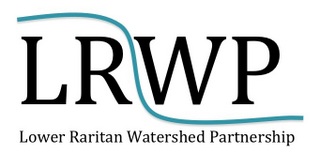7 ways environmental NGOs can be allies in the fight against systemic racism
By LRWP Board President Heather Fenyk
It is incumbent on the world of Environmental Non Governmental Organizations (ENGOs) to stand in solidarity with those protesting police brutality and systemic racial injustices. It is imperative that our ENGOs work to address these societal wrongs.
There are countless links between environmental injustice, environmental harms, racism, and inequality.
Consider lead contamination of water in predominantly black and brown communities, such as Newark, NJ and Flint, MI. These crises are rooted systemic racism.
Consider research findings that, in the U.S., the best predictor of whether you live near a hazardous waste site is the color of your skin.
Consider how legacies of redlining – the government-sanctioned denial of home loans and insurance to communities of color – means that people of color are more likely than white people to live alongside power plants, oil refineries, and landfills.
And consider how environmental racism is fueling the Coronavirus pandemic with resultant health disparities in our communities of color.

“I CAN’T BREATHE”. George Floyd’s last words, uttered under the knee of an officer of the peace, are as symbolic of our environmental injustices as they are of our history of racism in policing. “I can’t breathe” has been spoken by hundreds of thousands before George Floyd in the context of systemic racism that results in higher asthma rates in communities of color and, more recently, higher incidence of COVID-19 in communities of color.
What actions can our ENGOs take to be better allies in the fight against systemic racism?
Especially with respect to environmental and land use issues, our ENGOs hold data, advance research strategies, and have special insights into how to reform a racist system in which the status quo has always been unjust. Going forward:
1.We must prioritize analyses that focus on understanding the true extent of environmental injustices in our communities.
Environmental injustice is a term that describes how people of color and poor communities have borne disproportionate harm from pollution and environmental risks, and the discriminatory systems that have perpetuated those inequities. Most ENGOs collect and hold abundant environmental data (water and air quality, soil studies, hydrologic functions, climate trends, risks and hazards, etc.) that can be triangulated with life expectancy, land use, US Census, racial, demographic, and other social and health data variables to better understand the true extent of environmental injustice in our communities. We must prioritize these analyses in our work.
2.We must advance an understanding of how regional land management, especially in Home Rule states, can serve as an antidote to environmental racism and environmental injustices.
“Home Rule” biases in land use decision-making means that municipalities are not required to take into consideration the impact of these decisions on regional growth patterns, existing or planned land uses in adjacent municipalities, or watershed and larger ecological systems impacts. Examples of undesired impacts include flood control decisions that displace flood waters to neighboring municipalities, and fragmentation of habitat that compromises regional environmental health.
Local impacts are felt in low income communities that are not only not prioritized for flood protection or environmental clean-ups, but that also continue to be identified for siting of locally undesirable land uses (LULUs). Regional environmental planning, especially watershed management of large ecosystems, demands integrated thinking and coordination. Regional environmental planning promotes healthy communities and resilience through equity considerations at larger scales.
3.We must pressure our state Departments of Environmental Protection to rank our contaminated sites in order of risk and urgency with respect to climate change and environmental health, prioritizing the environmental health of communities of color and the most vulnerable.
Developing a community health-based prioritized ranking for clean-up of our contaminated sites can serve as a corrective to market-driven remediation that focuses on clean-up of the most economically desirable contaminated sites.
4.We must continue to gather water quality, air quality, and other data for lands and waters disproportionately accessed by people of color.
5.We must research the extent to which our local communities of color are more likely than white people to be at risk of hazards related to climate change.
6.We must advance “citizen science” practices and provide our environmental data and other resources to all our communities so that they can analyze and understand environmental justice issues in their own neighborhoods.
Our organizations must turn attention to communities of color to prioritize environmental education, support environmental stewardship, and develop regular outreach programs on how to use freely available on-line Environmental Justice, climate change, and health-related analytical tools.
7.We must educate ourselves about historic and system racism, supporting those who are imagining a new path forward for our state and nation through structural change.
This includes supporting and engaging with a diversity of environmental justice advocates, environmentalists of color, and those working toward social equity in our communities via social media and other platforms.
